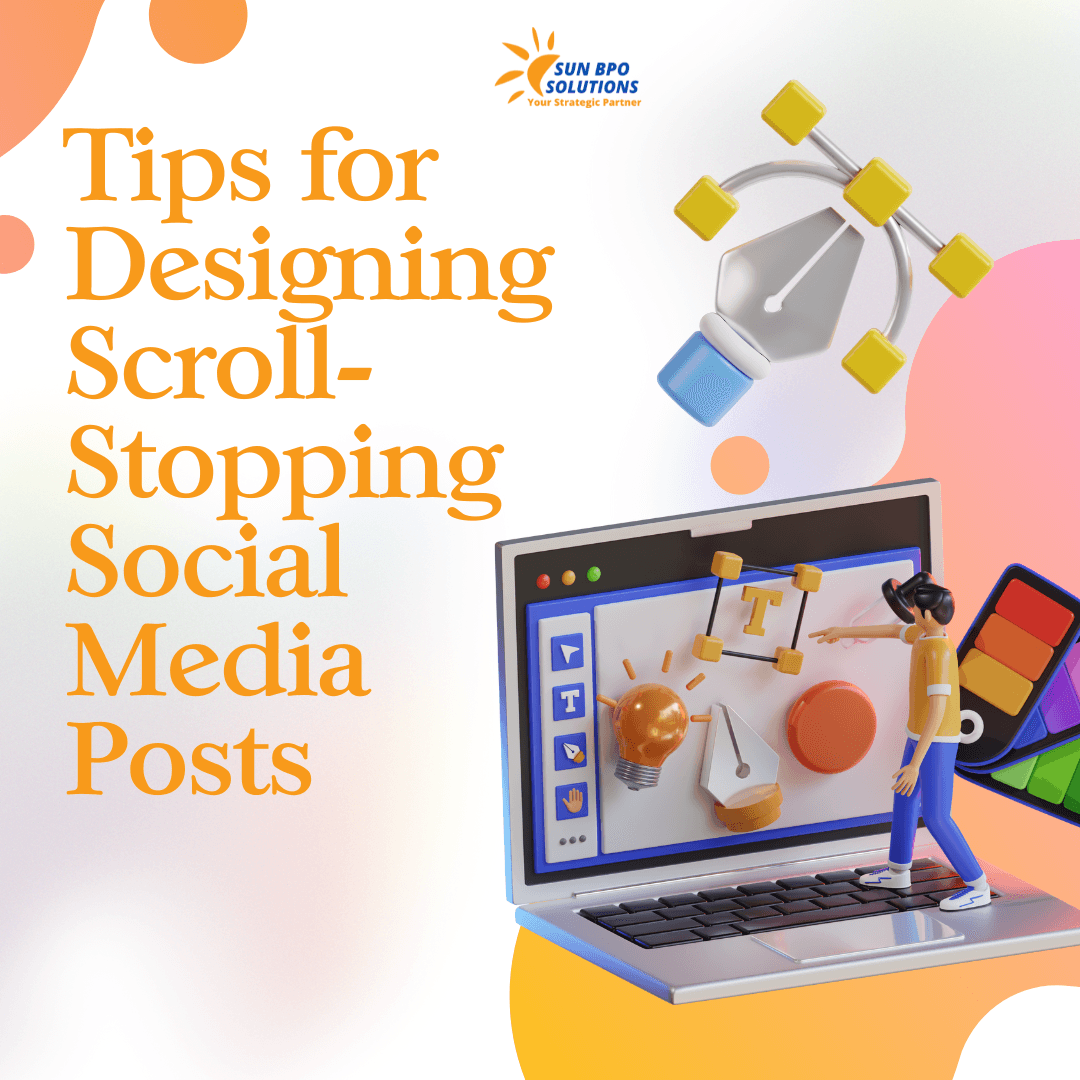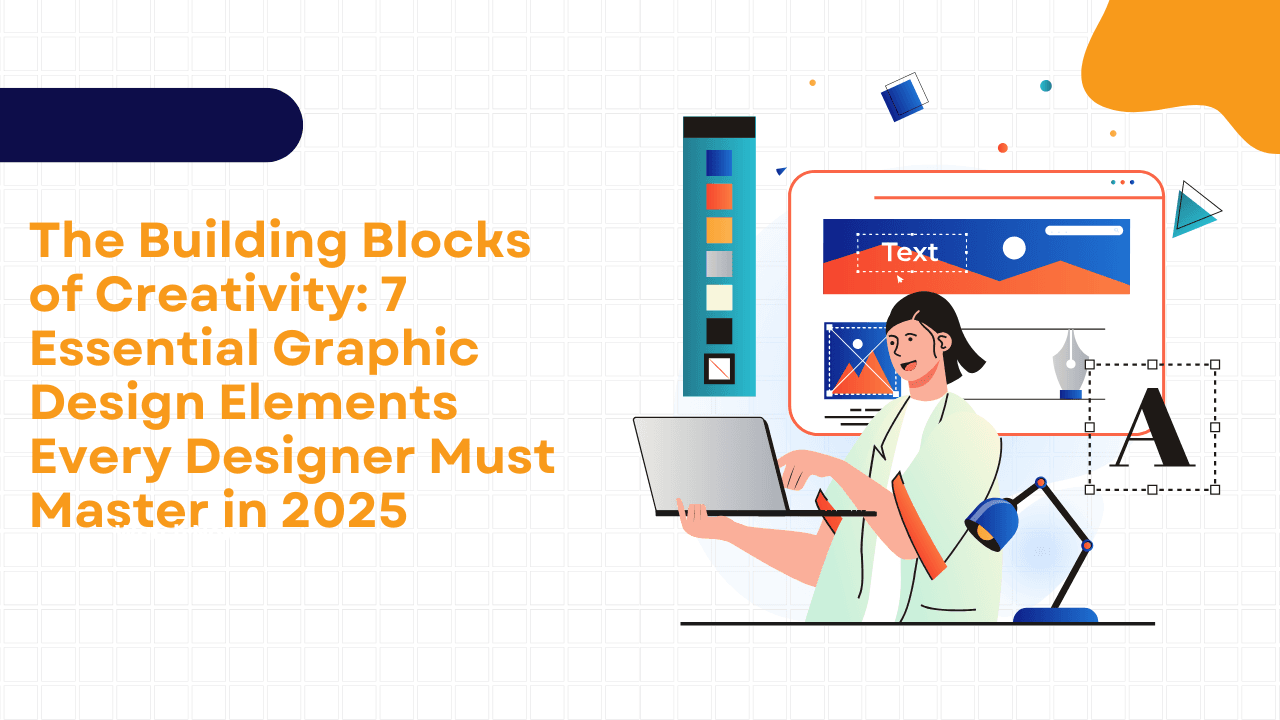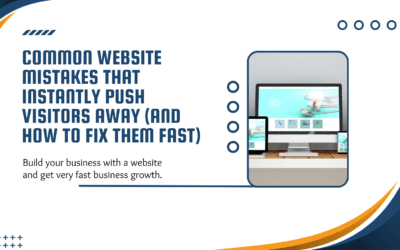Table of Contents
Introduction
In today’s visually driven world, first impressions are everything. Whether it’s a website banner, logo, ad creative, or social post, strong visuals instantly communicate your brand’s identity. And at the core of every stunning design lies the fundamentals of graphic design — the essential building blocks every designer must understand.
Mastering these graphic design elements helps you create visuals that are not only attractive but also meaningful, strategic, and memorable. In this blog, we’ll explore the 7 basic elements of graphic design, real examples, expert graphic designing tips, and how to use the right graphic design tools to bring your ideas to life.
What Are the Basic Elements of Graphic Design?
The basic elements of graphic design are the core visual components that guide how a viewer perceives and interacts with a design. They help create structure, emotion, and purpose.
These elements — when used strategically — ensure that your design is not just beautiful but also communicates a clear message.
The most important elements every designer must know include line, shape, color, texture, typography, space, and balance.lar you spend delivers measurable value.

7 Essential Graphic Design Elements Every Designer Should Know
✅Lines guide the viewer’s eye, create structure, and add personality to a design. They can be straight, curved, thick, thin, or decorative.
👉Graphic Designing Tip: Use consistent line weights to create visual hierarchy in website layouts or infographics.
✅Shapes help form icons, logos, buttons, and illustrations.
- Geometric shapes = structure, reliability
- Organic shapes = creativity, fluidity
Use shapes intentionally to create personality and guide attention.
✅Color influences mood, emotions, and brand perception. Understanding color theory is a core part of the fundamentals of graphic design.
Examples:
- Blue = trust (used by LinkedIn, PayPal)
- Red = urgency (used in sales graphics)
Graphic Designing Tip: Use a 60–30–10 rule for balanced color distribution. landing pages with high engagement by lowering CPC — meaning better visibility at lower cost.
✅Texture adds dimension, visual interest, and brand personality. In digital design, texture can be subtle — like grain, paper, or gradients.
Use texture wisely:
Too much can overwhelm your design, while subtle texture enhances it.
✅Typography is one of the most influential graphic design elements because it shapes readability, tone, and brand personality.
Graphic Designing Tips:
- Use a maximum of 2–3 fonts
- Maintain consistent spacing
- Highlight important text using hierarchy
Choosing the right font pairing is a crucial part of the fundamentals of graphic design. for better ROI.
Space (or “white space”) prevents clutter and improves clarity. It gives your design breathing room, making it easier to read and more visually appealing.
Minimalist designs rely heavily on strategic use of space.
Balance ensures that elements are distributed evenly to avoid visual tension. It can be:
- Symmetrical (traditional, formal)
- Asymmetrical (modern, dynamic)
A well-balanced design feels professional and intentional.
Impact of Graphic Design Elements
Graphic Designing Tools Every Designer Should Use in 2025
To apply the fundamentals of graphic design, you need the right tools. Here are the most popular:
Beginner-Friendly Tools:
- Canva
- VistaCreate
- Adobe Express
Professional Tools:
- Adobe Illustrator
- Adobe Photoshop
- Figma
- CorelDRAW
AI-Powered Graphic Designing Tools:
- Midjourney
- Adobe Firefly
- Canva AI
These tools help you apply the graphic design elements effectively while improving workflow and creativity.e content marketing growth.
Why Understanding Graphic Design Elements Matters
Whether you’re creating a social media post, a website interface, or an ad banner, these basic elements of graphic designing form the building blocks of your message.
They:
- Improve visual communication and storytelling.
- Strengthen brand identity through consistent style.
- Help achieve balance between creativity and usability.
When designers master these elements, they move from simply making things “look good” to crafting visuals that speak.
Final Thoughts
Great design isn’t about using fancy tools — it’s about mastering the fundamentals of graphic design.
By understanding and applying these basic elements of graphic designing, you can create visuals that are not only eye-catching but also strategic, emotional, and memorable.
Remember, every pixel, line, and color choice communicates something. Design with purpose — and you’ll design with power. optimization and performance-driven ad management
Boost your digital growth with stunning design and branding solutions — contact us today!
Claim your free digital marketing audit.
Stay updated with SunBPO Solutions for the latest trends, insights, and strategies to keep your business ahead of the curve!
Frequently Asked Questions (FAQs)
Which are the best pay-per-click tools for 2025?
Google Ads, Optmyzr, SEMrush, and WordStream are among the most effective tools for PPC campaign optimization.
Can automation improve PPC performance?
Yes. AI-powered pay-per-click tools analyze data faster and optimize bids automatically to deliver higher conversions.
How can small businesses benefit from PPC optimization?
A smart PPC campaign strategy allows small businesses to target specific local audiences, control budgets, and get measurable results.





0 Comments